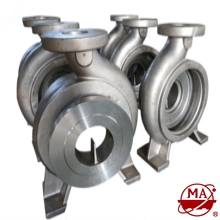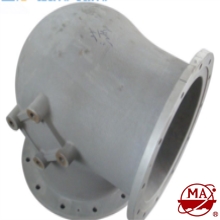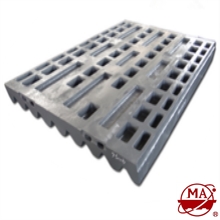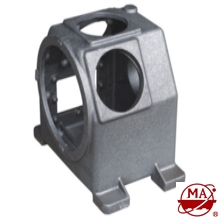 Sand Casting Introduction
Sand Casting Introduction
Sand casting is a widely form of aluminum casting. As the name implies, sand is used to create the casting mold. In aluminum sand casting, a metal pattern (commonly an aluminum pattern) of the finished part is placed in sand. The sand is then packed around the aluminum pattern to form the precise mold. The pattern must be removed before pouring the metal. And the mold will be made in two or more pieces, that says a mold always has more than one cavities. The mold must be modified to include a hole through which the metal will be poured, that is the sprue of the mold. The molten aluminum runs through sprue, runner system and gate into the mold cavity. The mold remains in static until the metal has solidified. The mold is destroyed when the part is removed, so a new mold should have to be made for each casting.
 Advantage and Disadvantage of Sand Casting
Advantage and Disadvantage of Sand Casting
Advantage of aluminum sand casting. Aluminum sand casting process is not limited by the size of the casting parts. Even Min-Aluminum’s aluminum casting can cast extreme large and heavy parts up to 950kg. Compared with the cost of a die casting mold, the aluminum pattern is much cheaper, thus aluminum sand casting is much economical to cast a small volume of goods say several hundred pieces or even below one hundred pieces. Besides, the lead time of an aluminum pattern is much shorter than that of a die casting mold, aluminum sand castings are always applied in sample testing period. It is economical and fast.
Disadvantage of aluminum sand casting. Aluminum sand casting has a low production yield, thus the labor cost is much higher than a die casting part with a large volume. So aluminum sand casting is not suitable to produce a casting part with a volume more than hundred thousands of pieces. As for its casting quality, aluminum sand castings always have a rough surface and the dimensions which could not be controlled to that of a die casting parts.
















